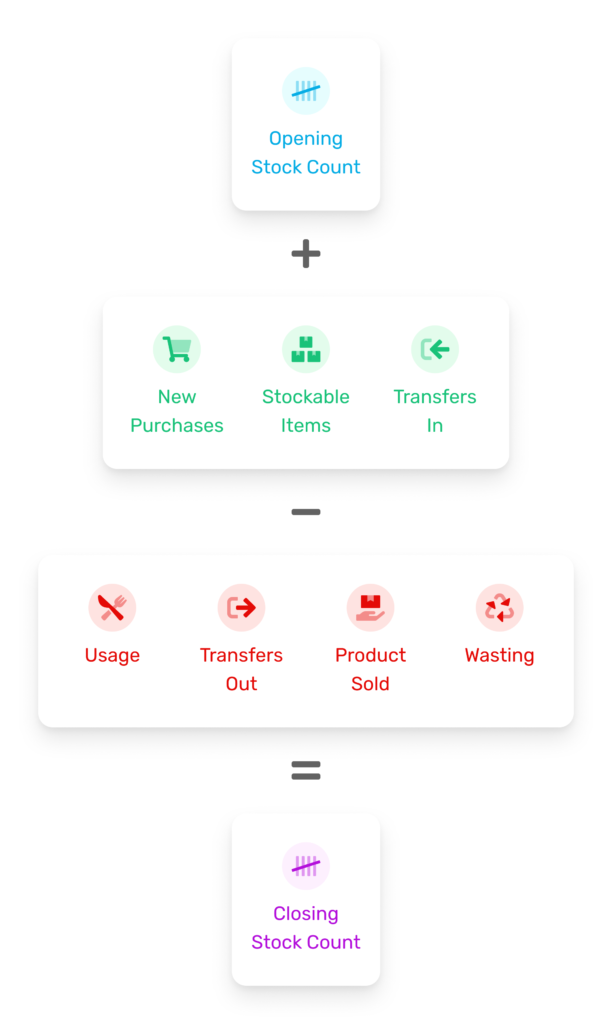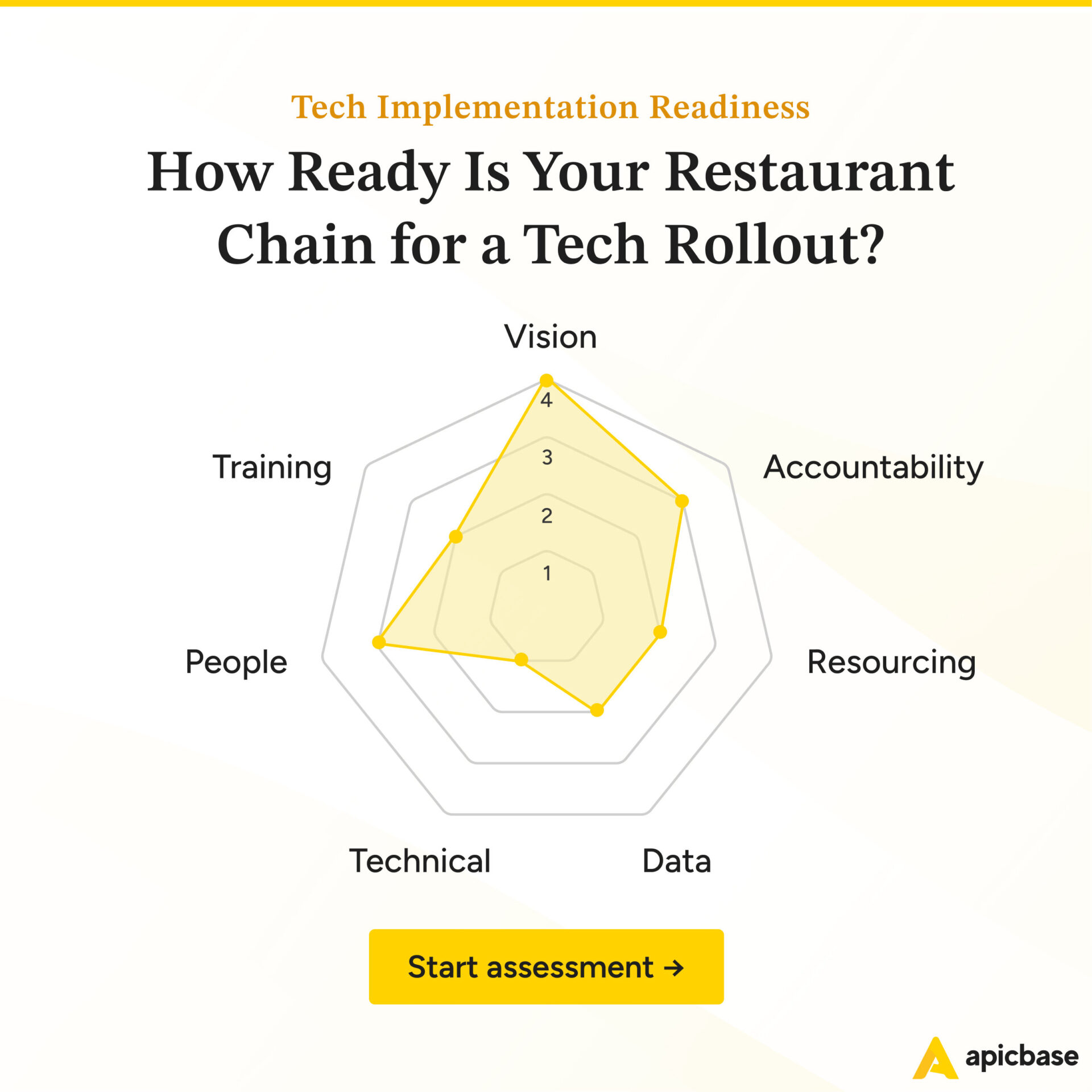For the most part, running F&B for a multi-unit operation is exhilarating. It’s a rush. It gets your blood pumping from the moment you deal with that first delivery crisis in the morning to the moment when you exhaustedly curl up to watch the Chef’s Table on Netflix in the evening.
It’s a great gig….
BUT…
Being the person responsible for the smooth sailing of 10+ F&B locations is also stressful AF.
All that worrying about food cost going up. Dish margins. Overall profitability.
Oof, right?
So what if I told you that there are a few simple things that you can start doing today that will a) keep your blood pressure from spiking every day, and b) add extra cash to your operation’s bottom line?
Sounds good?
Then keep reading and you’ll find out:
- why focusing on the first step of your inventory management process is critical to keeping your food cost under control;
- how to optimise your multi-unit F&B purchasing so staff only order exactly what they need (& when they need it);
- why working with a single source of truth (back-of-house) platform will transform how you do your job (saving you time and money).
Ready to start chipping away at that high food cost percentage?
Let’s do it.
F&B Managers in Chain Restaurants Either Know Their Inventory Levels OR…
… they watch in horror as the gap between theoretical and actual food costs goes up and up and up and up. When food costs increase uncontrollably, your profit margin goes… out the window.
So you definitely don’t want that happening.

The best thing that you can do in a multi-outlet restaurant operation (or any F&B operation) to keep your food cost from trending upward is to not play your inventory by ear.
Why?
Because when you do play it by ear, blunders like these happen:
- your food waste keeps going up. Like, really up — an average US-based restaurant wastes approximately $41,000 of food per year (about $112 per day).
- your employees get sticky fingers. I hate putting this so bluntly but… people do steal. Your employees are people. Ergo… This ‘skimming from the top’ can end up costing you around $90 per day per restaurant.
Now, can your operation safely ignore $200 per day per location? (When you run ten outlets that’s $60.000 per month.)
Yeah, I didn’t think so…
This is where your F&B inventory control and management system comes into play. Once you set it up (and stick to it), you’ll be able to plug those waste and pilferage holes that are draining your bottom line.
Here’s what an F&B inventory management system in restaurant chains needs to cover:
- Counts, counts and more counts — focus on accurate counts from the get-go. When you know what you’re working with each and every day, controlling and ordering against par becomes that much easier. (Grab our stock count template here for free).
- Write down your stocktaking procedure — if it’s written down, it’s easier to not miss a step. It’s easier to replicate it at a new location. And it’s easier to minimise mistakes.
- Train your employees — every employee needs to know the importance of accurate counts, even if they’re not the ones doing them regularly. They need to be able to step in as/when needed. If you’re implementing a new stock-taking system, test it at a single location, get feedback, adjust what needs adjusting, and then roll it out operation-wide.
- Record all inventory actions — everything gets written down — purchases, stock created in, stock created out, transfers, you name it. This way, you know what’s available for each location without doing daily counts.

- Spot-check your inventory when needed — get familiar with inventory turnover ratio (ITR) and days’ sales in inventory (DSI) calculations. These calculations help you gauge the overall health of your inventory and tell you if a deeper audit is needed.
- Use inventory insights to make better decisions — don’t collect data for the sake of data — use it to make a positive impact on your bottom line. If you can find out where waste is occurring in your operation, you can fine-tune your food waste management game to eliminate it (and lower your food cost).
And yes, you’re front-loading your work here a bit. It’s going to take time to get all these systems and procedures up and running.
But here’s the thing…
If you commit to weekly inventory counts for all your locations, you’ll add up to 10% to your bottom line. Not bad for 30 minutes of extra work every Monday morning, right?
Whenever you’re ready to learn how to better manage F&B inventory in your multi-outlet restaurant operation, tap the link below and read our ultimate guide to inventory management.
Recommended reading: F&B Inventory Management & Control for Multi-Outlet Restaurants
Best Practices: It All Comes Down to Your F&B Purchasing Decisions
The real reason why you should be obsessing over your inventory in a multi-unit restaurant is this — if you don’t know your actual inventory levels, you’ll never be able to fine-tune your F&B purchasing, flipping it from a cost centre to a value-creation centre.
There are plenty of opportunities for revenue padding in the procurement process.
That said, most F&B managers in restaurant chains treat it like a ‘set it and forget it’ kind of a thing. Of course, this attitude results in a lot of costly restaurant purchasing mistakes.

If you want to get ahead, you should stop making those. You should also treat your purchasing as a core business activity (which it is), and follow industry best practices when setting it up:
- Write down your SOPs and procedures — know how you purchase your F&B inventory and why you do it that way. This type of process clarity allows you to a) quickly get new procurement managers up to speed, and b) evaluate new vendor opportunities.
- Purchase only to meet demand — set item par levels and use demand forecasting to buy only what you need — no more and no less. This is where knowing your inventory inside out pays back tenfold.
- Contract with vendors for all items — yes, even for things like sugar, salt, and oil. When you’re running a multi-unit F&B operation, ordering in bulk gets you the best possible prices. Leverage your quantities.
- Spruce up your order forms — make sure they’re detailed without being overwhelming. Order forms should clearly communicate quantity, quality, package sizes, and prices.
- Up your delivery game — check everything that’s delivered to your locations (or your central storage unit). Turn away items that don’t correspond to the order form (either wrong quantity, packaging, or price).
- Double-check invoices — at the end of each month, work with your accounting department to verify invoices and payments. Make sure that you’re paying for what was delivered, and nothing else.
Procurement in a multi-unit F&B operation can quickly turn into an uncontrollable mess. For most managers. But not for you. Especially if you follow the advice laid out in our ultimate guide to procurement for restaurant chains. Go on — tap the link below and give it a read.
Recommended reading: The Ultimate Guide to F&B Purchasing for Multi-Outlet Restaurants
Ready to Ace F&B Inventory & Purchasing In Your Multi-Outlet Operation?
Here’s the thing…
I know you’re looking at these to-do lists and thinking: “Phew, that’s a lot of work!”.
And it is.
Everything is a lot of work when you’re doing it manually or (***trembles***) through spreadsheets.
So how about I let you in on a secret? A secret that allows shrewd F&B managers (check our client stories) to handle inventory and procurement management twice as fast and ten times as accurate?
(Cue drumroll, fanfare, and a red carpet if you have one handy.)
What you need in your life is Apicbase — a BoH platform that will be your single source of truth for everything inventory management and procurement related. Forget about calling line managers to get the numbers that you need. Forget about sifting through spreadsheets to find your counts. Forget about guesswork.
No More Sifting Through Spreadsheets. No More Guesswork.
With Apicbase, you’ll get to knock 50% off your team’s to-do lists (at least!) and still get better insights than when you’re micro-managing and double-checking every little thing.
Sounds too good to be true?
Chat with our experts and see Apicbase in action.
(Just kidding, there is no waitlist. The demo is free. You choose the date and the time)



